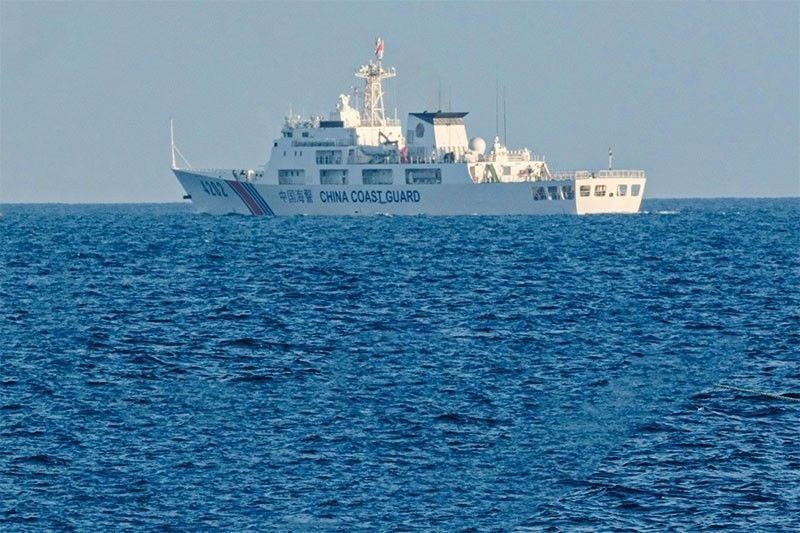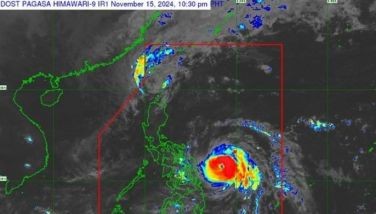Chinese research ship spotted near Palawan

MANILA, Philippines — A Chinese marine research vessel is doing survey work near the southern coast of Palawan, according to a defense and maritime security expert involved in tracking movements of ships in the South China Sea.
In a post on X yesterday, Ray Powell reported the presence of Chinese research ship Haiyang Dizhi 12 Hao off Palawan, along with six “militia ships” all named Qiong Sansha Yu, but with different bow numbers.
“China is now conducting a survey-in-force just 27 (nautical miles) from the Philippines’ coastline with (six) Qiong Sansha Yu militia ships escorting the Haiyang Dizhi 12 Hao research vessel,” Powell, a former US Air Force official and defense attaché wrote.
“Surveying another country’s exclusive economic zone (EEZ) requires that country’s permission per UNCLOS,” he said, referring to the United Nations Convention on the Law of the Sea.
“It may be they are simply there to send a message that China claims these waters,” he added.
He also posted a photo showing the route of the Chinese ships, which were already near the southern tip of Palawan as of yesterday.
There is no confirmation yet from the Philippine Coast Guard (PCG) of Powell’s findings.
Powell’s report came after the pullout last week of PCG’s BRP Teresa Magbanua from Escoda Shoal after five months of patrolling the area, under constant Chinese harassment. It had to return to its home base in Palawan to undergo repairs after it was repeatedly rammed by a China Coast Guard vessel. Its withdrawal also enabled its crew to have furlough and attend to their medical needs. Authorities said PCG and naval ships have been dispatched to Escoda Shoal to take over Teresa Magbanua’s patrol missions.
The PCG also reported that it has to spend millions of pesos to repair BRP Cape Engaño and BRP Bagacay, which sustained damage after they were rammed by Chinese vessels while on a resupply mission to Patag and Lawak islands last month.
PCG spokesperson Rear Admiral Armand Balilo said that the two 44-meter multi-role response vessels are already in Danao, Cebu and undergoing repairs. The Teresa Magbanua is also expected to sail to Danao today for repairs.
For Bagacay alone, Balilo told The STAR, the cost of the repairs was estimated at P13 million.
“The MRRVs BRP Bagacay and BRP Engaño are no longer covered by their warranties. For BRP Bagacay, the Coast Guard might have to spend P13 million for its repairs. While there is still no estimate on the cost of the repairs for BRP Cape Engaño,” said Balilo.
He said they would be apprised of the cost of repairing the Teresa Magbana once it reaches the Danao shipyard.
“What may be costly is repairing the holes, but fixing the railings might not be too expensive,” he said.
“We will check if it is still covered by a warranty. It might still be covered by a three-year warranty,” he said. The Teresa Magbanua was built by Mitsubishi Shipbuilding Co. Ltd. through a Japan International Cooperation Agency loan.
He added that the repairs on Teresa Magbanua might take two to three months.
Balilo said that while the PCG has funds for ship repair, it would have been better if the money would be spent for improving vessels’ capability. Of the PCG’s 26 vessels, 13 are capital ships or primary vessels.
“We still have other ships, but we could have used them in search and rescue operations. We are still missing fishermen because of the recent bad weather,” he added.
Meanwhile, the Philippine Navy welcomed yesterday the delivery of another two missile-capable vessels.
It said two Fast Attack Interdiction Craft (FAIC) platforms were received at Pier 15 of South Harbor in Manila on Sept. 17.
The two FAICs, to be given bow numbers PG908 and PG909, will be the seventh and eighth fast boats of the Acero-class patrol vessels.
Similar to their predecessors, the newly delivered platforms are designed for high-speed operations, featuring advanced missile systems and sophisticated onboard technology, intended to enhance the Philippine Navy’s capability to conduct rapid and effective maritime interdiction operations.
“The arrival of these vessels underscores the continued modernization of the Philippine Navy and represents a crucial step toward bolstering the Self-Reliant Defense Posture program of the country,” the Navy said in a statement yesterday. — Evelyn Macairan, Pia Lee-Brago
- Latest
- Trending


























